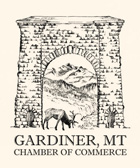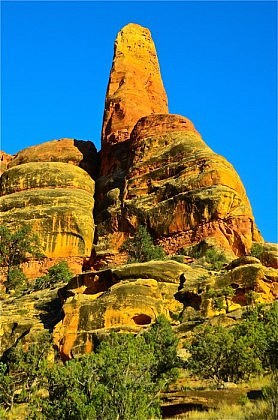First, look around before you get too invested in a tent sight. On thing that’s guaranteed to ruin a good night’s sleep in the wilderness is to be crushed or skewered in your tent by a falling tree. And in loud enough wind or rain or both, nobody will even hear you squeal!
The easiest way to avoid falling trees is to camp in the middle of a meadow. One problem with this is that it is usually colder, dewier and windier out in the open, so this may not be a great option. Or, it is snowing or raining like hell. Do you really want to be out in the open, exposed? Also, in Yellowstone (but not on our trips in national forest Wilderness), we are required to camp at designated sites, many of which do not include the meadow option. So. What to do? Here’s what I suggest: Look around and use your common sense. If a snag or even a live tree is leaning in one direction, don’t pitch your tent in its trajectory! Don’t try for a Darwin award, at least on a Big Wild trek!
It is also useful to learn some tree identification. Beware of leaning lodge pole pines and also Engelmann spruces. Aspens are a safer bet, as are Douglas-firs which have deep root systems and are therefore less likely to fall at any given time. But less likely does not mean “unlikely”. Really, it is best to pitch your tent where the surrounding tress will fall away from your location. Consider both wind direction and leaning angle. I have seen (and heard) many trees fall in the forest. Occasionally I’ll see or hear one go down when there’s very little wind and soil that is not saturated. Sometimes it is that tree’s time. Like us, trees eventually fall, independent of external factors. And so our job as campers on a guided wilderness backpacking trek is to make sure that when they do, we are unlikely to get squished or skewered. Yes, bears get most of the press when it comes to danger out in the wilds, but it is the more mundane hazards that are more likely to do us in while backpacking in Yellowstone: falling, drowning, lightening, driving to the trail-head, and yes, getting plonked by a falling tree.



